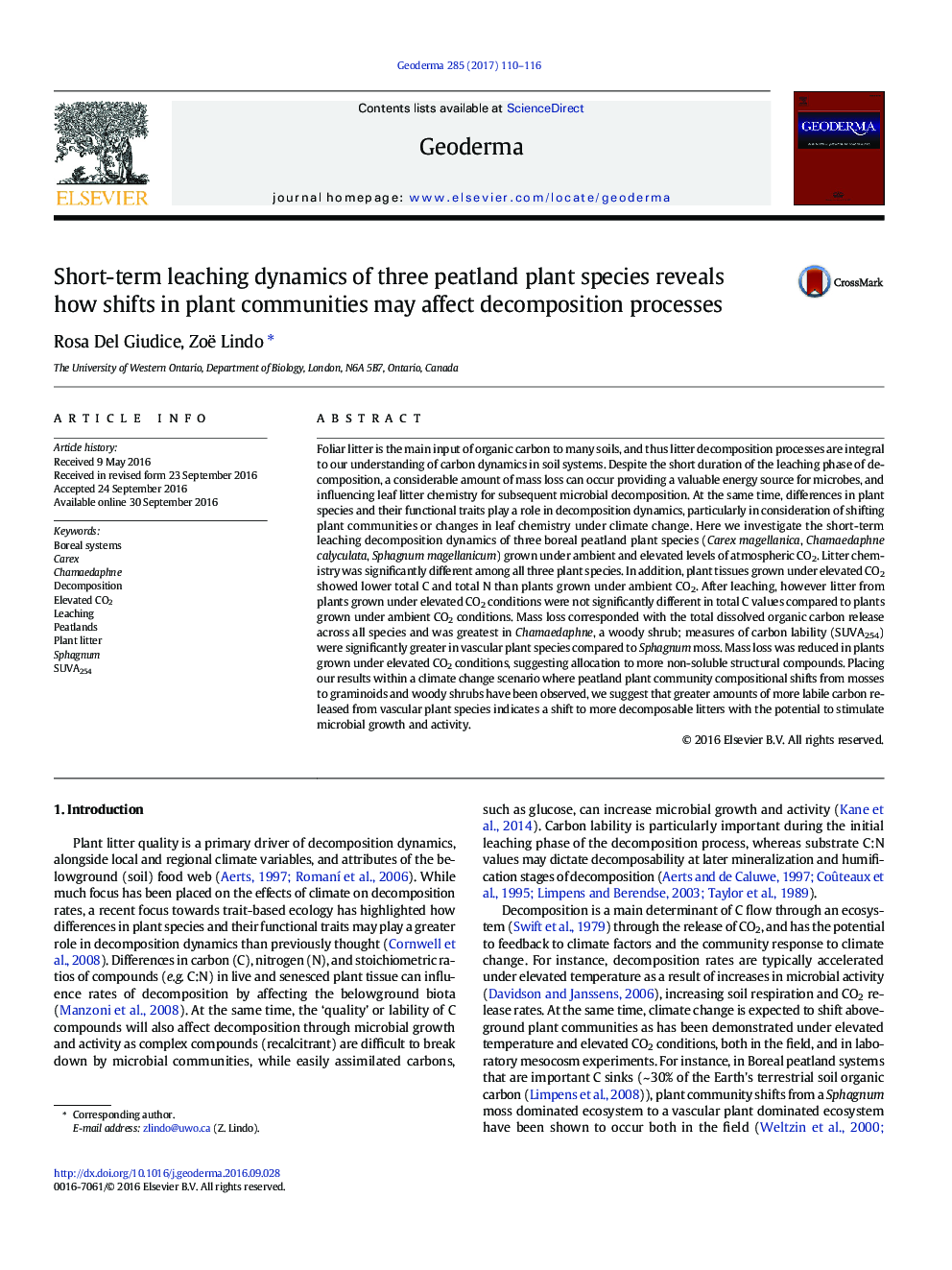| Article ID | Journal | Published Year | Pages | File Type |
|---|---|---|---|---|
| 6408198 | Geoderma | 2017 | 7 Pages |
â¢Plant species identity and CO2 growing conditions influence soluble carbon release.â¢Vascular plant species release more carbon of greater lability during leaching.â¢Elevated CO2 growing conditions increased carbon lability of vascular plants.â¢Plant species shift under climate change will likely impact carbon inputs to soils.
Foliar litter is the main input of organic carbon to many soils, and thus litter decomposition processes are integral to our understanding of carbon dynamics in soil systems. Despite the short duration of the leaching phase of decomposition, a considerable amount of mass loss can occur providing a valuable energy source for microbes, and influencing leaf litter chemistry for subsequent microbial decomposition. At the same time, differences in plant species and their functional traits play a role in decomposition dynamics, particularly in consideration of shifting plant communities or changes in leaf chemistry under climate change. Here we investigate the short-term leaching decomposition dynamics of three boreal peatland plant species (Carex magellanica, Chamaedaphne calyculata, Sphagnum magellanicum) grown under ambient and elevated levels of atmospheric CO2. Litter chemistry was significantly different among all three plant species. In addition, plant tissues grown under elevated CO2 showed lower total C and total N than plants grown under ambient CO2. After leaching, however litter from plants grown under elevated CO2 conditions were not significantly different in total C values compared to plants grown under ambient CO2 conditions. Mass loss corresponded with the total dissolved organic carbon release across all species and was greatest in Chamaedaphne, a woody shrub; measures of carbon lability (SUVA254) were significantly greater in vascular plant species compared to Sphagnum moss. Mass loss was reduced in plants grown under elevated CO2 conditions, suggesting allocation to more non-soluble structural compounds. Placing our results within a climate change scenario where peatland plant community compositional shifts from mosses to graminoids and woody shrubs have been observed, we suggest that greater amounts of more labile carbon released from vascular plant species indicates a shift to more decomposable litters with the potential to stimulate microbial growth and activity.
